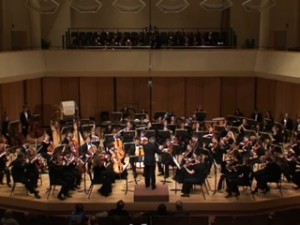
Maurice Ravel composed Concerto for Piano (Left Hand) and Orchestra for Austrian pianist Paul Wittgenstein, who lost his right arm in a World War I injury. In 1934, the piece was performed in Montreal, Boston, and New York, achieving critical praise. As a composer, Ravel has been noted for his use of American jazz elements; he was also influenced by Russian, Spanish, and Basque music.
Gustav Mahler’s Symphony No. 5 is significant in its departure from Mahler’s earlier symphonies. The symphony expresses distinct moods created by the instrumentation and melodies, and has also become known as a “heroic” work with the music protagonist. Changes in his technique included greater use of polyphony and explorations of orchestral timbres. Moreover, later movements within the Fifth relate to previous excerpts; this self-referentiality creates a feeling of narrative even without the use of external texts.